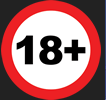 |
Angus McNae's Racing UK Blog |
| Tuesday 28th January 2014 | |
Twiston-Davies’s Positivity on Big Buck’s was a Negative
Paul Nicholls has issued a strong defence of the ride that Big Buck’s received in the Cleeve Hurdle when he was third at Cheltenham on January 25.
You would expect nothing less from a man of strong will and opinions.
There is no doubt in my mind that he was right to rally round Sam Twiston-Davies on the basis that the instructions he gave the rider were to be positive and the jockey certainly delivered on that front.
My contention is that Big Buck’s was ridden with too much aggression, and from too early on in the race. Being positive in a race does not have to mean that you kick on from a long way out.
It is surely a multi-faceted concept that is intrinsically linked to other factors, most importantly pace. There is no point being positive, if that means unequal distribution of a horse’s energy.
To be positive must also mean to think positively, to optimize your horse’s chance of winning, to find even pace and to keep enough gas in the tank.
These are positive actions for they give you a better chance of winning. What is the point of riding a horse so aggressively that it leads to defeat, and a first one in 19, too?
I have watched the Cleeve Hurdle over and over again and each time I have come to the same conclusion: that Big Buck’s would have won the race had he not been asked to make a big effort after jumping the fourth last.
Between that hurdle and the third last there was an injection of pace on top of an already sound gallop. This resulted in Big Buck’s duelling with Quartz De Thaix for the lead until he went on jumping the third last.
Big Buck's eventually won this race within a race seeing off Quartz De Thaix, but in winning this battle he used up vital energy, thereby sacrificing his chance of winning the war. Surely it would have been better to have got a lead down the hill, conserving vital fuel?
The injection of pace was too much for the eventual winner, Knockara Beau who lost ground and was off the bridle coming down the hill. In essence he looked beaten. That he rallied up the hill is tantamount to his toughness but it also tells us that he ran his race more evenly than Big Bucks.
The same can be said of At Fishers Cross, who was ridden to optimum effect from the back. To have got the eventual winner in trouble from three out, and then to end up being beaten by that horse must mean that Big Buck’s either needed the run so badly that he stopped after the last or he was empty because his effort was made too early in the race.
There is no doubt that Big Buck’s would have needed the run, but if he had been 100% fit he would probably have just about scrambled home.
Surely even a partially fit champion such as him could beat Knockara Beau, a horse rated 29lb his inferior. Big Buck’s should have won, he was fit enough to get within three-quarters of a length of winning and thus we must conclude that the move from four out to three out had a big effect on the outcome.
Before the Cleeve I wrote that maybe Big Buck’s is a difficult ride that Ruby Walsh made look easy.
In light of what happened on Saturday, is Big Buck’s actually an easy ride that was made to look difficult?









